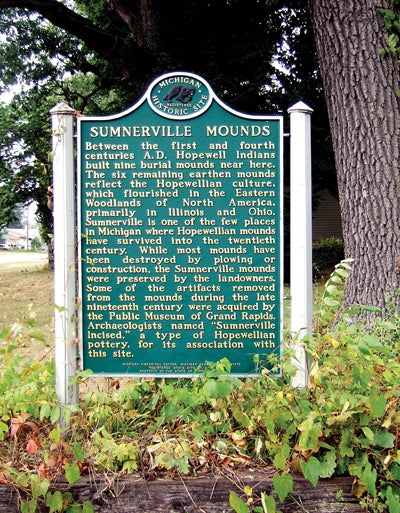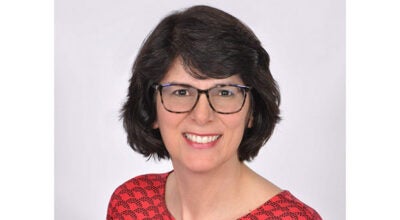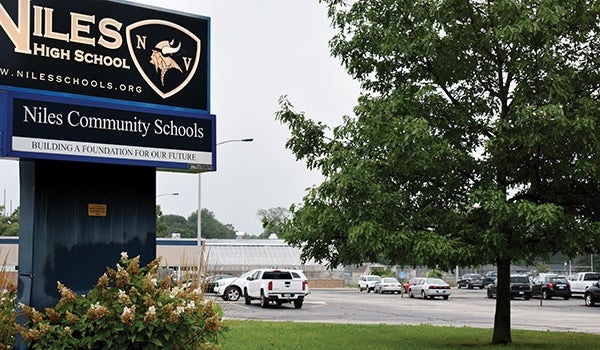Sumnerville earthen mounds speak of early culture
Published 6:01 pm Sunday, August 19, 2012

Leader photo/TERRI GORDON A sign tells the story of Sumnerville's earthworks, or burial mounds. Two of the mounds can be viewed near the sign.
By TERRI GORDON
Leader Publications
From the first to the fourth centuries of the Common Era (CE) — before the British, before the French, even before the Pokagon, Potawatomi and Algonquin — the Goodall Focus, a culture of the Hopewellian tradition, flourished in southwest Michigan.
Almost nothing is known of these people — where they came from and what became of them are mysteries. What is known of them comes largely from the earthen mounds they left behind in Michigan and Indiana. Nine such mounds pepper the village of Sumnerville.
Barbara Wood Cook has lived in the Sumnerville area all her life. She knows the mounds well.
“We probably owned, at one time, all the property where the mounds were,” Cook said. “My father, grandfather and great-grandfather knew of them. Most are visible from the roads in the area if you know where to look, and the fields are not covered in crops.”
Most of the mounds occur in open spaces — spaces that became farmed fields. As plows encountered the mounds, they wore them down. Today, some of the mounds are almost imperceptible “undulations.” From the air, these undulations show themselves as remnant mounds.
Cook’s father, Jerome Wood, flew over his freshly plowed fields in the 1960s.
“The color variations in the recently worked soil made the ancient mounds readily visible from the air,” Cook wrote in the self-published, 1998 book, “Pokagon Township Reflections,” written by Cook and her late husband, Grafton H. Cook II.
A horseshoe-shaped enclosure is found near one mound cluster. Again, an aerial view reveals that fires were burned in the enclosure — but for what purpose is only a guess.
The horseshoe enclosure and the nine mounds — believed to be burial mounds as excavations have produced skeletons — were all noted, in 1828, by the first man to survey the area, William Brookfield. Two of the nine mounds were preserved, largely because the land they sat on was not farmed. These mounds sit in the center of Sumnerville and are explained on a nearby historical marker.
“Native Americans living here when the European settlers came were respectful of the mounds,” Cook said.
Interest in the mounds led to their excavation in the late-1800s, and in the opinion of most local historians, to their plunder.
Still, almost everything known of the Goodall Focus has come from the examination of the mounds and their contents. Unfortunately, whether by ignorance or unscrupulous practice, the artifacts taken from the mounds were sold and no further record of them is known, except for one piece listed in an inventory for the Grand Rapids Museum.
Aside from skeletal remains, the mounds contained pins made of bones, tools of both bone and stone, arrow heads, smoking pipes, raw materials like mica and copper, shells — both local and from afar — a carved tooth and other ornamental items, and baked and glazed pottery. A type of pottery that seems unique to the region is now referred to as “Sumnerville Incise.”
Preserved cloth reveals the culture knew how to weave, and copper axes show they understood metalworking.
“We don’t know how to harden copper today,” Cook said, “but they had a hard edge.”
If you had asked her as a child what she wanted to be when she grew up, historian would not have been on Cook’s list. But when she moved with her parents to the family farm, she couldn’t help wonder about the people who had lived there before them — who they were, and how they lived. She has spent the bulk of her life trying to answer these questions, and preserving the histories she has uncovered.
She can’t shake the sense that modern civilization may go the way of the ancient ones before, and that the way to prevent our own demise may be hidden in histories others have left behind.
“Sometimes we learn better by looking back on past civilizations,” Cook said.






